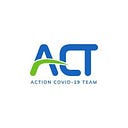Robotic Solutions — Changing Health Treatment Protocols in India
By Sweta Daga
In March when the national lockdown was announced in India, the government tried to prepare for patients by supporting hospitals with equipment and gear, a crucial part being ventilators. Since the medical community was indicating that COVID was a disease that impacted people’s ability to breath, it was important that ventilators be in good supply.
Mr. Harshit Rathore,who is the CTO & Director of Nocca Robotics, explains, “Nocca Robotics primarily started as a company to design and develop solutions for real world problems. Before the lockdown began in India, Nocca developed products for the solar industry. Noccarc S200 and Noccarc A600, both being the waterless solar panel cleaning robots for large scale solar power plants.
Delivering During Covid19
Post the COVID-19 lockdown in March, looking at the surge in demand for ventilators, we decided to take up the challenge to design and develop a fully functional indigenous ICU ventilator in collaboration with SIIC IIT Kanpur. In the initial phases of product development, Nocca Robotics was financially supported by ACT Grants that helped the R&D team to build the prototype of the ventilator. The process of lab testing, hospital validations and pilot installations of Noccarc V310 ventilator was further proactively catered and smoothened by ACT Grants.”
He further explains some of their challenges. “Before the pandemic, 85% of med-tech equipment demand was dependent on imports. But, due to the ban on the export of these equipment by other countries, India faced a huge challenge to facilitate the healthcare infrastructure in treating COVID-19 patients. To bridge this gap, we developed Noccarc V310 ICU Ventilator and successfully deployed it in various private and government hospitals across the country. We then realized something else — with critical market research and experience in rapid product development, we further identified the need of High Flow Oxygen Therapy Devices (HFNC) in the treatment of COVID-19 and developed the Noccarc H210, a High Flow Oxygen Therapy Device which is now clinically tested.”
Abhishek Modi, who is part of the ACT Grants team explains how prioritizing HFNCs was important for India’s healthcare system. “According to our research, on average, out of every 100 patients who enter the hospital with COVID, 80 cases are mild, 18 are moderate and 2 are critical. Before hospitals had access to HFNCs, all of those 20 people were placed on ventilators which are very invasive, and not needed for the moderate cases. HFNC’s lead to a faster recovery which means it is better for the patients and helps our doctors. We are changing the healthcare treatment protocol in India.”
We spoke to few people who have used solutions provided by Nocca. Dr Swapnil Pathade, from Naidu Hospital in Pune says, “Noccarc H210 is a very user-friendly and easy to use machine. It has been very effective in treating COVID-19 patients who are at a moderate stage of breathlessness.”
Future Products — ACT & Nocca
ACT’s goal is to deploy 450 devices across India, across 8 government hospitals in 4 states. 160 High Flow Oxygen Therapy’s devices have already been launched, 80 are in transit and by the end of October, all 450 HFNCs will be in use, saving countless lives, and supporting doctors across the country.
After the successful development and deployment of ICU ventilator and High Flow Oxygen Therapy device, Noccarc is gearing up to develop more ICU grade devices, leveraging its expertise and experience in the healthcare sector. The company is also looking ahead to develop home healthcare devices along with the ICU grade machines.Looking at the overwhelming response from clients and the success of technical competitiveness, Nocca is also looking forward to catering to the export market ‘Make in India’ products for the world.
Editing by Sneha Banerjee
